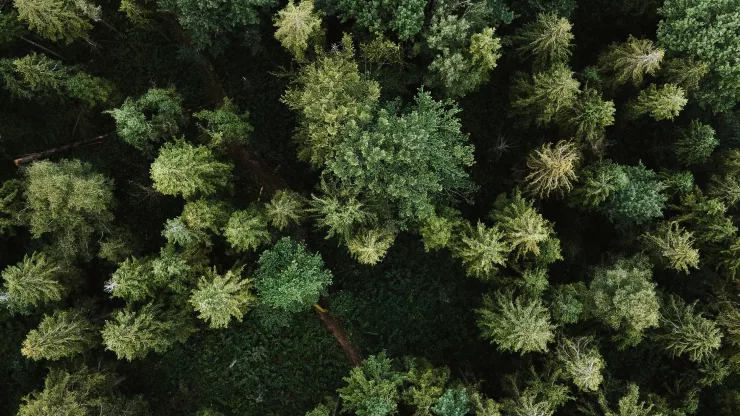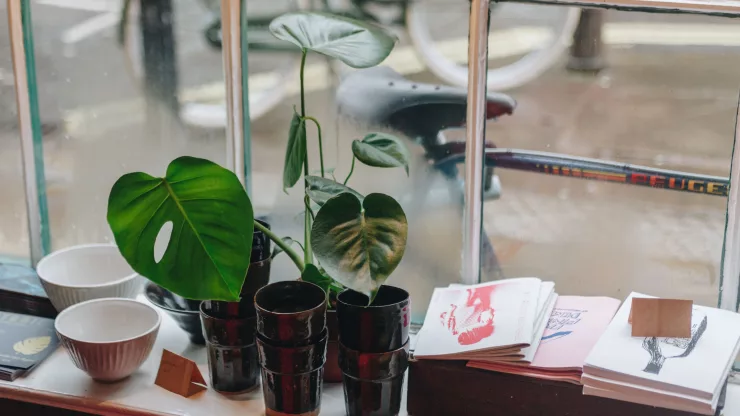As cities continue to grow, the need to incorporate green spaces becomes increasingly important.
Green roofs, or roofs that are covered in vegetation, are one way to bring nature back to urban areas.
Not only do they provide a visual break from concrete and steel, but they also offer a habitat for urban wildlife.
In this article, we will explore the benefits of green roofs for urban wildlife, how to design them with wildlife in mind, and showcase successful green roof projects.
Jump to Section
Introduction
Green roofs are becoming increasingly popular in urban areas, as they offer many benefits such as improving air quality, reducing the urban heat island effect, and reducing stormwater runoff.
However, they also offer a unique opportunity to create habitat for urban wildlife.
By incorporating plant and animal life into the design of a green roof, we can create a new space for animals to thrive.
Overview of Urban Wildlife and Green Roofs
Urban wildlife refers to any animal that lives within an urban or suburban environment.
These can include birds, insects, small mammals, and reptiles. Green roofs can provide these animals with a new habitat, as they offer an environment that is similar to their natural habitat.
For example, a green roof can provide shelter, food, and water for birds or insects.
Benefits of Green Roofs for Urban Wildlife
Increased Biodiversity and Habitat Creation
Green roofs provide a new habitat for urban wildlife, which can help to increase biodiversity in urban areas.
By creating a diverse range of plants on a green roof, we can attract different species of animals.
This can include birds, bees, butterflies, and other insects.
Additionally, green roofs can provide a habitat for small mammals such as mice or squirrels.
Improved Air and Water Quality
Green roofs can help to improve air and water quality in urban areas. Plants on green roofs absorb carbon dioxide, which can help to reduce greenhouse gas emissions.
Additionally, green roofs can absorb rainwater, which can help to reduce stormwater runoff. This can help to reduce the amount of pollution that enters our waterways.
Reduction in Urban Heat Island Effect
The urban heat island effect refers to the increased temperature in urban areas compared to rural areas.
This is due to the high concentration of buildings and pavement, which absorb and retain heat.
Green roofs can help to reduce this effect by providing shade and cooling through evapotranspiration. This can help to create a more comfortable environment for urban wildlife.
Designing Green Roofs for Urban Wildlife
Plant Selection and Placement
When designing a green roof for urban wildlife, it is important to select plants that are native to the area.
This can help to attract local wildlife and reduce the risk of invasive species.
Additionally, plants should be arranged in a way that provides a variety of habitats for different animals.
For example, tall grasses can provide a habitat for birds to nest, while low-growing plants can provide a habitat for insects.
Incorporating Water Features
Water is an essential element for many animals, so incorporating water features into a green roof can help to attract wildlife.
This can include small ponds, bird baths, or even just a shallow dish of water.
Additionally, water features can help to reduce the amount of stormwater runoff and provide a cooling effect.
Creating Nesting and Roosting Sites
Green roofs can provide a new habitat for birds to nest and roost.
By incorporating nesting boxes or birdhouses into the design of a green roof, we can provide a safe and comfortable environment for birds.
Additionally, tall grasses or shrubs can provide a habitat for birds to roost.
Maintenance Considerations
When designing a green roof for urban wildlife, it is important to consider maintenance requirements.
Regular maintenance, such as watering and weeding, can help to ensure that the plants are healthy and attractive to wildlife.
Additionally, it is important to ensure that the green roof is structurally sound and able to support the weight of the plants and any wildlife that may inhabit it.
Case Studies
Successful Green Roof Projects for Urban Wildlife
| Project Name | Location | Description | Species Observed |
|---|---|---|---|
| The Living Roof | San Francisco, CA | A 2.5-acre green roof on the California Academy of Sciences | Over 50 species of birds, including the American kestrel and the white-crowned sparrow |
| The Chicago City Hall Rooftop Garden | Chicago, IL | A 20,000 square foot green roof on the Chicago City Hall | Butterflies, bees, and birds such as the house sparrow and the American goldfinch |
Challenges and Lessons Learned
| Challenge | Lesson Learned |
|---|---|
| Structural Capacity | It is important to ensure that the building can support the weight of the green roof and any wildlife that may inhabit it. |
| Maintenance | Regular maintenance is necessary to ensure that the green roof is healthy and attractive to wildlife. |
| Invasive Species | Choosing native plants can help to reduce the risk of invasive species and attract local wildlife. |
The Importance of Green Roofs for Urban Wildlife
Green roofs provide a unique opportunity to create habitat for urban wildlife.
By incorporating plant and animal life into the design of a green roof, we can bring nature back to urban areas.
Additionally, green roofs offer many benefits, such as improving air and water quality, reducing the urban heat island effect, and increasing biodiversity.
Moving Forward: Opportunities for Growth and Innovation
As the popularity of green roofs continues to grow, there are many opportunities for growth and innovation.
New technology, such as green walls and vertical gardens, can provide additional opportunities to create habitat for urban wildlife.
Additionally, research on the benefits of green roofs for urban wildlife can help to inform future design and maintenance.
FAQ
What is a green roof?
A green roof is a roof that is covered in vegetation.
It can provide many benefits, such as improving air and water quality, reducing the urban heat island effect, and creating habitat for urban wildlife.
What kind of wildlife can live on a green roof?
A variety of wildlife can live on a green roof, including birds, insects, small mammals, and reptiles.
By incorporating native plants and water features, we can create a diverse habitat for different species.
Are green roofs expensive to install and maintain?
Green roofs can be more expensive to install than traditional roofs, but they can provide cost savings over time by reducing energy costs and stormwater runoff.
Additionally, regular maintenance is necessary to ensure that the green roof is healthy and attractive to wildlife.
I’m a nature enthusiast and creator of Metro Wilds and have spent years exploring the great outdoors.
With a passion for environmental conservation and sustainability, I have dedicated my career to writing about the beauty and wonders of nature, as well as the threats facing our planet.
Contact me at [email protected] for assistance.





